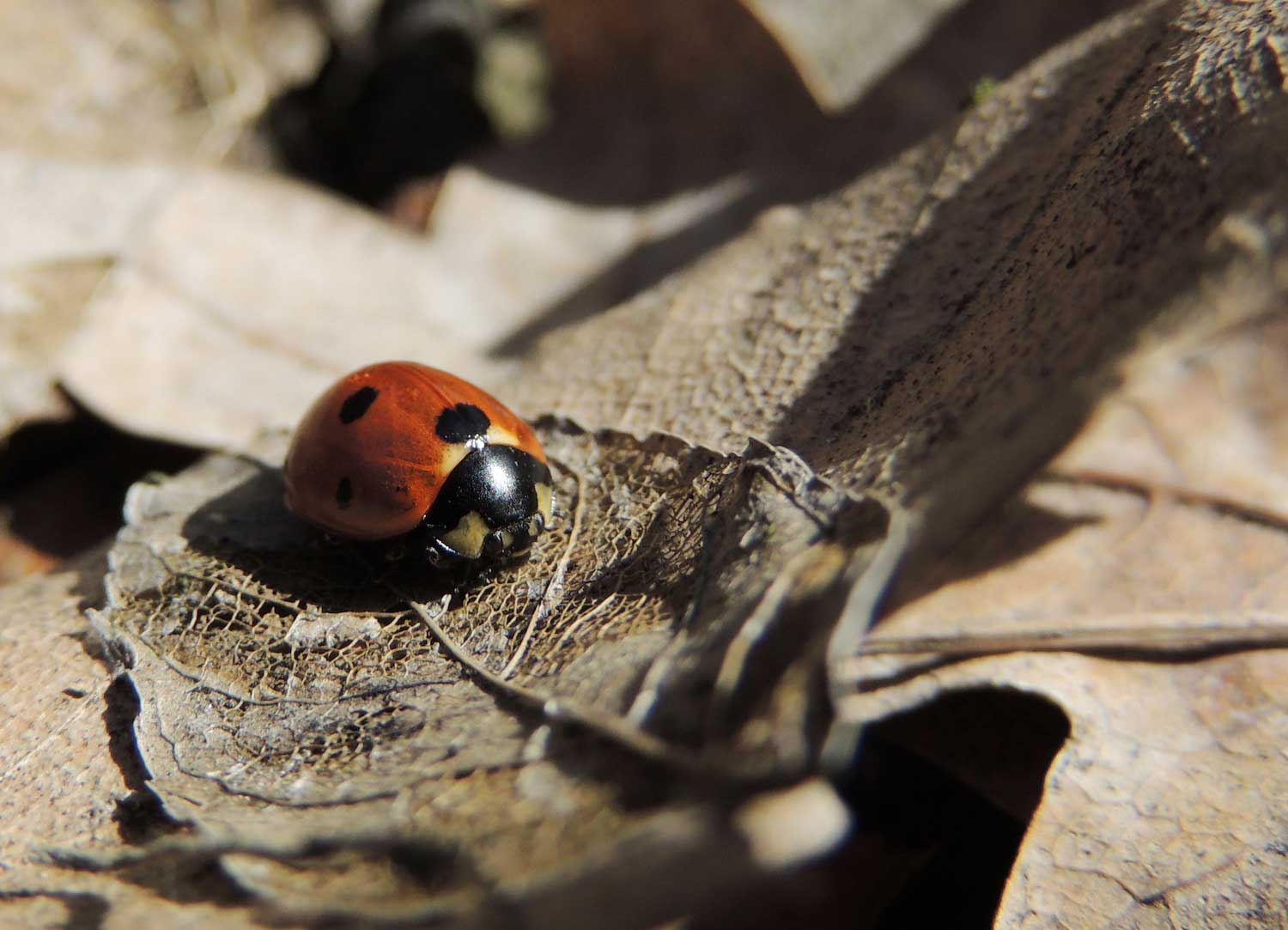Nature curiosity: Where do insects go in winter?

As winter sets in, the world all around us seems to get a little quieter. Some animals enter hibernation or brumation, some leave the area altogether and others — many humans included — start to spend less time out and about. One thing we may not miss is the lack of insects that winter brings.
Sure, you might find a stink bug that made its way into your house, or you may even spot a lady bug on an unseasonably warm later fall or early winter day. For the most part, though, the coldest time of year is free of insects.
So where do they go? It depends. Different insects rely on different strategies to survive the winter, but for many insects, their life cycle plays an important role.
Insects have either a three-stage or four-stage life cycle. The three-stage life cycle is called incomplete or gradual metamorphosis, and in this cycle insects transform from egg to nymph to adults. The four-stage life cycle is called complete metamorphosis, and the insects transform from egg to larva to pupa to adult, according to the University of Nebraska-Lincoln Department of Entomology.
Many insects overwinter in one stage of their life cycle. Some, like praying mantises, overwinter as eggs, according to the Smithsonian Institute. The adult mantises lay eggs in the fall before dying off. After overwintering, the nymphs then hatch in the spring.
Other insects, including the silkworm family of moths, overwinter as pupae, the Smithsonian reports. These moths spend their winter in cocoons then emerge as adults in the spring. Similarly, many insects overwinter as larvae. Many of these insects rely on leaf litter to protect them from the extreme cold of winter. Some, though, can replace the water in their bodies with glycerol, which prevents them from freezing. Still others protect themselves from freezing by burrowing deep into the soil to stay below the frost line.
For insects that undergo incomplete metamorphosis, some overwinter as nymphs. For example, the nymphs of some dragonflies and mayflies, among other kinds of insects, spend the winter feeding and growing. You've probably never seen evidence of this activity, though, because these nymphs typically live in ponds, lakes and streams and may be under the ice.
Some insects rely on an altogether different strategy to survive winter: migration. The most well-known migrating insect is the monarch, but they aren't the only one. Other insects that migrate south for winter include common green darner dragonflies, large milkweed bugs and painted lady butterflies, according to the National Wildlife Federation.
Monarchs migrate to the oyamel fir forest in the Sierra Madre mountains of Mexico each winter, but the monarchs that overwinter in Mexico are not the same ones that return here the following spring. The returning monarchs are a future generation of the ones that traveled to Mexico to overwinter, according to Monarch Joint Venture. The same is true for other migrating insects as well. The common green darners and painted ladies that arrive here each spring, for example, are future generations of the insects that migrated south the previous fall.
One last strategy employed by a small number of insect species to survive winter is one we are familiar with in mammals: hibernation. Woodchucks are perhaps the most famous hibernators in northern Illinois, but many insects hibernate as well, according to the Smithsonian Institute. Some bumblebees and wasps hibernate for winter, as do lady bugs and mourning cloak butterflies. And those stink bugs you sometimes see in your house in winter? They're doing their version of hibernating. When temperatures begin to cool in the fall, they head for warmer climes, like your house.
